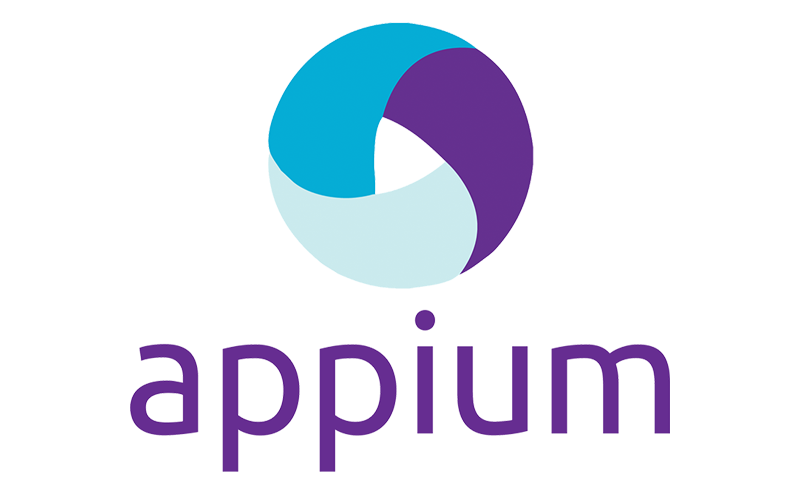10 Advanced Appium Techniques for Mobile App Testing Experts

Mobile app testing is crucial to the software development cycle. As mobile apps continue to become more complex, testing experts need to keep up with the latest testing techniques and tools. Appium is an open-source tool for automating mobile app testing that has gained popularity in recent years due to its versatility and compatibility with different platforms and programming languages.
In this article, we will discuss 10 advanced Appium techniques that mobile app testing experts can use to enhance their testing capabilities. These techniques range from using XPath expressions and desired capabilities to image recognition and integrating with cloud testing services. By incorporating these techniques into their testing process, mobile app testing experts can improve the quality of their testing and ensure the success of the app’s launch.
1. XPath Expressions
XPath is a query language used to traverse and select elements in an XML document. In Appium, XPath expressions are used to locate and interact with elements within the mobile app being tested. XPath expressions are written using specific syntax and can target elements by their attributes or text values.
The benefits of using XPath expressions in Appium include increased precision in element selection, the ability to locate elements that do not have a unique ID or name, and the ability to select multiple elements with a single XPath expression. XPath expressions can also be used in conjunction with other Appium commands, such as clicks and inputs, to interact with elements in the app.
Here’s an example of how XPath expressions can be used in Appium:
Suppose you want to locate the search box element in the Google Search app. You can use the following XPath expression:
//android.widget.EditText[contains(@resource-id, ‘search_box_text’)]
This expression targets the EditText element with a resource ID that contains the string ‘search_box_text’. By using this expression, you can locate the search box element and perform various actions on it, such as typing in a search query.
2. Integration with CI/CD Tools
CI/CD (Continuous Integration/Continuous Deployment) tools are used to automate the build, testing, and deployment of software applications. Appium can be integrated with popular CI/CD tools like Jenkins, Travis, and CircleCI to streamline the testing process for mobile apps.
The benefits of integrating Appium with CI/CD tools include faster feedback on code changes, reduced testing time, and the ability to test on multiple devices and platforms simultaneously. Integration with CI/CD tools also allows for the creation automated test suites that can be executed regularly as part of the development cycle.
Here are some examples of how Appium can be integrated with popular CI/CD tools:
- Jenkins: Appium can be integrated with Jenkins using plugins like Appium Plugin and Xcode plugin. These plugins allow for the creation and execution of Appium tests as part of the Jenkins build process.
- Travis: Travis CI is a cloud-based CI/CD tool that can be used to build and test Android and iOS apps. Appium tests can be added to the Travis configuration file, which will execute them on the desired devices and platforms.
- CircleCI: CircleCI is another popular cloud-based CI/CD tool that supports Android and iOS app testing with Appium. CircleCI can be configured to execute Appium tests automatically whenever a new commit is made to the code repository.
Overall, integrating Appium with CI/CD tools can provide numerous benefits to mobile app testing experts, including faster feedback, reduced testing time, and the ability to test on multiple devices and platforms simultaneously.
3. Parallel Testing
Parallel testing is a technique used to execute multiple tests simultaneously. Appium supports parallel testing, which can significantly reduce the testing time and speed up the feedback cycle.
In parallel testing, multiple devices can run the same tests simultaneously. This technique can help to identify issues that might not be detected during sequential testing, such as race conditions or performance issues. Parallel testing can also increase test coverage, as more devices can be used to test the app.
The benefits of parallel testing with Appium include faster feedback on code changes, reduced testing time, improved test coverage, and the ability to test on multiple devices and platforms simultaneously.
Here are some examples of how Appium can be used for parallel testing:
- Appium Grid: Appium Grid is a tool that allows for the parallel execution of Appium tests on multiple devices and platforms. Appium Grid can be used to create a hub that controls multiple nodes, each of which can run tests on different devices.
- TestNG: TestNG is a testing framework for Java that supports parallel testing. Appium tests can be integrated with TestNG, which can execute the tests on multiple devices simultaneously.
- Docker: Docker is a containerization platform that can be used to run Appium tests in parallel. By using Docker, each test can be executed in a separate container, which can be scaled up or down as needed.
Overall, parallel testing with Appium can help mobile app testing experts to reduce testing time, improve test coverage, and speed up the feedback cycle.
4. Desired Capabilities
Desired capabilities are key-value pairs used to set the behavior of the app and the test environment during testing. They can be used to define the device configuration, launch the app, and handle app-specific behaviors. Desired capabilities are a crucial aspect of mobile app testing with Appium as they enable the automation of complex testing scenarios.
Benefits of using desired capabilities in Appium include the ability to set device configurations and test the app’s behavior in different environments, improved test reliability, and faster test execution times. Desired capabilities can also help to reduce the need for manual intervention during testing.
Here are some examples of how desired capabilities can be used in Appium:
- Setting device configurations: Desired capabilities can be used to set the device type, platform version, and other settings required to run the app. For example, the desired capability “platformName” can be set to “Android” or “iOS”, depending on the platform on which the app is being tested.
- Handling app-specific behaviors: Desired capabilities can be used to handle app-specific behaviors, such as enabling or disabling location services, enabling or disabling notifications, or setting the language and locale.
- Launching the app: Desired capabilities can be used to launch the app and specify the app’s package and activity name. For example, the desired capability “appPackage” can be set to the package name of the app being tested, while the desired capability “appActivity” can be set to the activity name that needs to be launched.
5. Dynamic Waits
Dynamic waits are a technique used to pause the execution of the test script until an element becomes available in the app. This technique is essential in mobile app testing, as app elements can take different amounts of time to load.
The benefits of using dynamic waits in Appium include improved test reliability, reduced test execution times, and the ability to handle dynamic content. By using dynamic waits, mobile app testing experts can prevent test failures caused by elements not loading in time.
Here’s an example of how dynamic waits can be used in Appium:
Suppose you want to wait for a login button to become available in the app. You can use the following Appium code to wait for the button to appear:
| WebDriverWait wait = new WebDriverWait(driver, 10);wait.until(ExpectedConditions.visibilityOfElementLocated(By.id(“login_button”))); |
This code uses the “WebDriverWait” class to pause the test execution until the login button is visible in the app. The “ExpectedConditions” class is used to specify the condition that needs to be met before the test can proceed.
Overall, dynamic waits are a crucial technique in mobile app testing with Appium, as they help to ensure that tests are reliable and accurate.
6. Multi-Language Support
Multi-language support is the ability of an app to display content in different languages, depending on the user’s preferences. In Appium, mobile app testing experts can test the app in different languages to ensure that the app’s content is displayed correctly and that the app’s functionality is not affected.
The benefits of testing apps in multiple languages include ensuring the app’s accessibility to users from different regions, ensuring that the app’s content is correctly displayed, and improving the app’s overall user experience. Testing apps in different languages can also help to identify issues that might not be detected during testing in a single language.
Here are some examples of how Appium can be used to test apps in different languages:
- Setting the language and locale: Appium desired capabilities can be used to set the language and locale of the device on which the app is being tested. This will cause the app to display content in the specified language.
- Using different input methods: Mobile app testing experts can use different input methods, such as virtual keyboards or speech-to-text, to test the app’s functionality in different languages.
7. Using Appium Desktop
Appium Desktop is a graphical user interface (GUI) for Appium that allows for the creation and execution of tests, as well as the inspection of app elements and debugging of tests. Appium Desktop provides a user-friendly interface for mobile app testing experts to create and execute Appium tests.
The benefits of using Appium Desktop include improved productivity, enhanced visibility into the app elements, and easier debugging of tests. Appium Desktop can also help to reduce the time required to write Appium test scripts.
Here are some examples of how Appium Desktop can be used:
- Creating and executing tests: Appium Desktop allows mobile app testing experts to create and execute Appium tests in a user-friendly environment. Appium Desktop provides a visual representation of the app elements, making it easier to create test scripts.
- Inspecting app elements: Appium Desktop provides a GUI for inspecting the app elements and identifying the element’s attributes. This can help mobile app testing experts to create more precise test scripts.
- Debugging tests: Appium Desktop provides a debugger that can help to identify issues in the test scripts. The debugger can be used to step through the code and identify where the test is failing.
Overall, Appium Desktop provides a user-friendly interface for mobile app testing experts to create and execute Appium tests. It can help to improve productivity, enhance visibility into the app elements, and simplify the debugging process.
8. Remote Testing
Remote testing is a technique used to execute Appium tests on a device located remotely. This technique is useful when testing on physical devices that are not accessible locally or when testing on devices with different platforms and configurations.
The benefits of remote testing with Appium include the ability to test on a wide range of devices and configurations, the ability to test on physical devices that are not accessible locally, and the ability to reduce testing time by running tests in parallel on multiple devices.
Here are some examples of how Appium can be used for remote testing:
- Using cloud-based testing services: Appium can be integrated with cloud-based testing services like LambdaTest to execute tests on remote devices. These services allow mobile app testing experts to test their apps on a wide range of devices and configurations.
- Using a remote testing infrastructure: Mobile app testing experts can set up their remote testing infrastructure using tools like Selenium or Appium. These tools allow tests to be executed on remote devices connected to the infrastructure.
9. Image Recognition
Image recognition is a technique used to identify elements in an app based on their visual appearance. This technique is useful when testing apps that do not have unique identifiers or when testing on devices with different screen sizes or resolutions.
The benefits of using image recognition with Appium include the ability to identify elements that do not have unique identifiers, improved test reliability, and faster test execution times. Image recognition can also help to reduce the need for manual intervention during testing.
Here’s an example of how image recognition can be used in Appium:
Suppose you want to click on a button in the app, but the button does not have a unique identifier. You can use image recognition to identify the button based on its visual appearance. Here’s how it can be done:
- Take a screenshot of the button using Appium’s “takeScreenshot” command.
- Use an image recognition tool like OpenCV or Sikuli to identify the button in the screenshot.
- Use the identified coordinates to click on the button using Appium’s “click” command.
Overall, image recognition is a useful technique in mobile app testing with Appium, as it can help to identify elements that do not have unique identifiers and improve the test reliability.
10. Integrating with Cloud Testing Services
Cloud testing services provide remote access to a wide range of devices and configurations for testing mobile apps. These services can be integrated with Appium to streamline the testing process and reduce testing time.
The benefits of integrating Appium with cloud testing services include the ability to test on a wide range of devices and configurations, reduced testing time, and the ability to scale testing resources as needed. Integration with cloud testing services can also reduce the operational costs associated with maintaining a local device lab.
Here is an example of how Appium can be integrated with cloud testing services:
LambdaTest is a cloud-based digital experience testing platform that can be integrated with Appium to streamline the mobile app testing process. The platform provides access to over 3,000+ browsers, operating systems, and devices, allowing mobile app testing experts to test their apps on a wide range of configurations.
Appium tests can be executed on LambdaTest by specifying the desired capabilities and running the tests on the platform. Mobile app testing experts can also use LambdaTest’s integrated test scheduler to schedule tests for execution at a specific time or date. The platform also provides other features such as real-time testing, cross-browser testing, visual regression testing, and a bug-tracking system, making it a comprehensive solution for mobile app testing.
Benefits of integrating Appium with LambdaTest include reduced testing time, improved test coverage, and the ability to test on a wide range of devices and configurations. Overall, LambdaTest is a robust cloud testing platform that can be seamlessly integrated with Appium to enhance the mobile app testing process.
Conclusion
In conclusion, Appium is a powerful tool for mobile app testing, and mobile app testing experts can benefit from advanced techniques like XPath expressions, parallel testing, desired capabilities, dynamic waits, multi-language support, remote testing, image recognition, and integrating with cloud testing services.
By leveraging these advanced techniques, mobile app testing experts can streamline the testing process, reduce testing time, and improve test reliability. Appium’s open-source nature and active community make it an attractive choice for mobile app testing, and its ability to integrate with a wide range of tools and services makes it a flexible and adaptable solution for mobile app testing.






